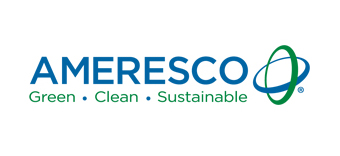First Mover Wastewater Utilities Convert Human Biogas into Natural Gas
Five-year payback on biogas plant for a municipality made possible through public-private partnership
By Michael T Bakas
As budgets continue to shrink for cities and towns, the prospect of building and financing an energy plant is most likely nauseating to municipal leaders. However, a new trend is beginning to emerge at wastewater utilities where innovative municipalities are teaming up with the private sector to finance and build new biogas utilization facilities and pipelines that convert sewage and sludge into usable energy product.
Nearly all of a water utility’s waste can be recycled or reused by taking biogas generated during the sewage treatment process and capturing and refining it. The gases emitted from sewage make it a renewable energy source that can be harnessed and re-purposed to be used for energy generation on-site, or even sold as an energy commodity to the open market, creating new revenue streams for cash-strapped cities and towns. The first sewage facility in the United States to refine biogas for the grid went online in September 2010, when the San Antonio Water System (SAWS) and Ameresco, Inc. opened a new biogas facility at the Dos Rios Water Recycling Center. SAWS is the first large wastewater utility to partner with a private sector company to actively sell biogas in the US.
By partnering with a private entity that can provide risk, technical, and financing expertise, a wastewater utility, which is usually owned by the municipality that it serves, can become a self-sustaining energy generator with a relatively low capital investment. Although there are substantial capital investments in equipment and technology upgrades needed to implement projects such as these, through a combination of energy savings, government grants, and utility company incentives, the economics of a biogas facility construction and operation can actually be quite favorable.
In the case of San Antonio, under a 20-year partnership, Ameresco will invest the capital necessary to treat and deliver up to 1060 standard cubic feet per minute (SCFM) of biogas to the natural gas market. In return, SAWS ratepayers will receive a royalty on the sale of the gas, estimated at $200,000 a year. SAWS invested about $1 million in pipelines and structures that were constructed, and it expects the biogas plant to have paid for itself in as few as five years. Those funds will help to reduce the cost of SAWS operations and keep rates affordable. This additional revenue stream can be significant in today’s economic climate, and could allow a municipality or owner of a wastewater utility to invest in the efficiency of their operations with minimal risk.
A major metropolitan water recycling center typically treats the wastewater that is collected in a central sewer shed of a city. In San Antonio, 1.1 million citizens produce about 140,000 tons of biosolids each year. Treating these biosolids generates an average of 1.5 million cubic feet of untreated digester gas every day. That’s enough gas to fill seven commercial blimps. Digester gas is the product of decomposition of biosolids, sludge, human waste, and industrial waste. For years, water utilities have been clearing off the waste gas and burning it, typically using flares. Now, this methane gas is being captured, transferred to a processing facility, and then injected into a natural gas pipeline where a third-party buyer can purchase the gas in the open market. It is refined to pipeline quality gas specifications.
A new fuel supply provides new opportunities for on-site generation or steam combustion. It could fuel large fleets or public buses that utilize compressed natural gas (CNG), alleviating the need to purchase costly fuel for plant vehicle operations, and minimizing air emissions. In addition, it can be sold to an electric utility, a natural gas power plant, or into a fuel supply contract or power purchase agreement (PPA).
In San Antonio, gas is sold to third-party energy providers. Local subcontractors and operators were hired to build and operate the project. Sewage now treated at Dos Rios is used to generate three environmentally friendly products, which SAWS calls its “recycling trifecta.” In addition to the new gas injected into the pipeline, SAWS generates recycled water, improving river quality, and used in place of potable water by industry and manufacturers. About 115 million gallons a day of high-quality recycled water are used at the Riverwalk, golf courses, parks, and commercial and industrial customers. It also generates compost from waste, which is used to improve soil quality. SAWS also generates compost from waste, which is marketed locally to improve soil quality.
In Texas, the Dallas Water Utilities (DWU) biogas plant will generate 4.3 MW of electricity and thermal load to power its own facilities. As an added benefit, the free waste heat from the generators will be used to heat the digesters. The plant will offset the electricity that the DWU currently pulls from the grid. DWU has the option to sell the generated electricity back into the grid.
By leveraging biogas, a renewable resource that is naturally emitted during the wastewater treatment process, new market opportunities have emerged. With the right technological tools and financing mechanisms, local governments and water utility owners can now make a risk-averse investment in the local economy that is environmentally friendly and beneficial to the customers they serve.
Michael T. Bakas is Senior Vice President of Renewable Energy at Ameresco, Inc. For more information about how Ameresco can help with your renewable energy project, call 866-AMERESCO or visit www.ameresco.com.
Originally published by North American Clean Energy Magazine www.nacleanenergy.com Volume 5 Issue 1.
Contacts:
Ameresco: CarolAnn Hibbard, 508-661-2264, [email protected]

